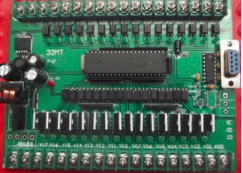PCB proofing is a substrate used to assemble electronic parts. It is a printed board that forms dot connections on the internal substrate and prints components according to a predetermined PCB design. The main function of PCB products is to make various electronic components form a predetermined circuit connection, which plays the role of relay transmission, which is the key to the electronic interconnection of electronic products. The manufacturing quality of printed circuit boards not only directly affects the reliability of electronic products, but also affects the overall competitiveness of system products. Therefore, printed circuit boards are called "the mother of electronic system products." The development level of the printed circuit board industry can reflect to a certain extent the development speed and technical level of the electronics industry in a country or region.

Glass fiber yarn: Glass fiber yarn is made of raw materials such as silica sand and calcined into a liquid in a kiln. It is drawn into very thin glass fibers through a small alloy nozzle, and then hundreds of glass fibers are twisted into glass fiber yarn. The construction investment of the kiln is huge. For capital-intensive industries, 30,000 tons of kilns need 400 million yuan, and the new kiln needs 18 months. The boom cycle is difficult to grasp. Once it is ignited, it must be produced 24 hours a day, and about five years later., Production must be stopped for half a year for maintenance, and the investment exit cost is huge.
Fiberglass cloth: Fiberglass cloth is one of the raw materials for copper cladding. It is made of glass fiber fabric, which respectively accounts for 40% of the cost of copper plates (thick plates) and 25% (thin plates). The manufacturing of glass fiber fabrics is similar to that of weaving companies. The capacity and quality can be controlled by controlling the speed, and the specifications are relatively single and stable. Since the Second World War, the specifications have hardly changed significantly. Unlike copper clad laminates, the price of glass fiber is most affected by the relationship between supply and demand. In recent years, the price has fluctuated between US$0.50 and US$1.00 per square meter. Taiwan and China currently account for approximately 70% of the world's production capacity. The upstream and downstream relationship is the key to operation. The price of a loom is between 100,000 and 150,000, and it can normally produce more than 100. However, the subsequent heat treatment and chemical treatment equipment requires a high capital, which can reach the level of 10 million, and the weaving capacity is expanded. Easy and more flexible.
Copper foil: Copper foil accounts for the largest proportion of the cost of copper plates, accounting for about 30% and 50% of the cost of copper plates (thick plates) and more than 50% (thin plates). Therefore, the growth of copper foil is the main driving force for the growth of copper foil costs. The price of copper plates has risen. Copper foil has a wide range of applications, not only suitable for the copper plate industry, when the copper plate industry is down, copper foil manufacturers can also switch to copper foil for other purposes. The price of copper foil is closely reflected in the changes in the price of copper. As the price of copper rises, copper foil manufacturers are shifting to the downstream of cost pressure. High-tech barriers in the copper foil industry have led to insufficient domestic supply. High-grade copper foil still needs to be imported in large quantities, and investment and factory costs are also very high.
Copper Clad (CCL for short): It is based on electronic grade glass fiber cloth, immersed in epoxy resin, dried to make the semi-cured state of the adhesive sheet, and then single-sided, double-sided or in a special heat The thin copper foil coated on the surface of the multilayer board made under the pressing process is the direct raw material of the PCB. The copper cladding industry has a large demand for funds, with a small-scale factory of about 50 million yuan and a high degree of concentration. There are about 100 in the country. The copper cladding industry is a cost-driven cyclical industry. In the upstream and downstream industry chain structure, the copper clad laminate has a strong bargaining power. As long as the downstream demand is good, the pressure of rising costs can be transferred to the downstream PCB manufacturers, But only large-scale copper clad laminates can make a strong sound in the procurement of raw materials such as glass fiber cloth, copper foil and so on. Because the use of copper plate products is single, they can only be sold to printed circuit board factories. When the PCB is recessed, the use capacity can only be guaranteed at the price.